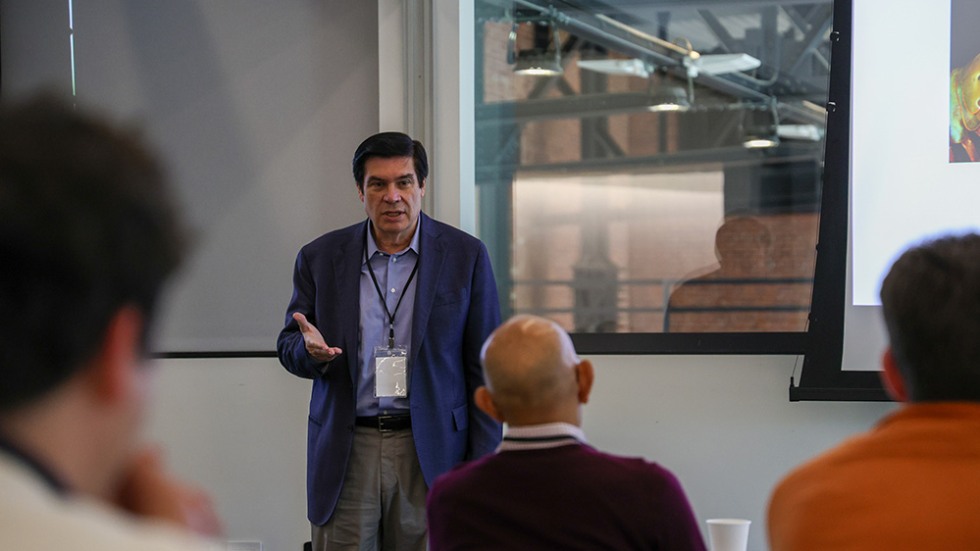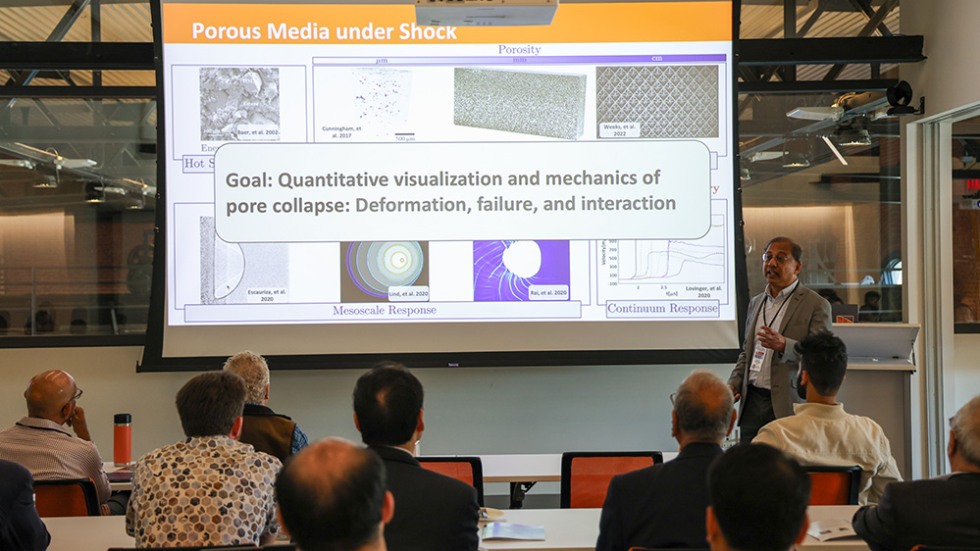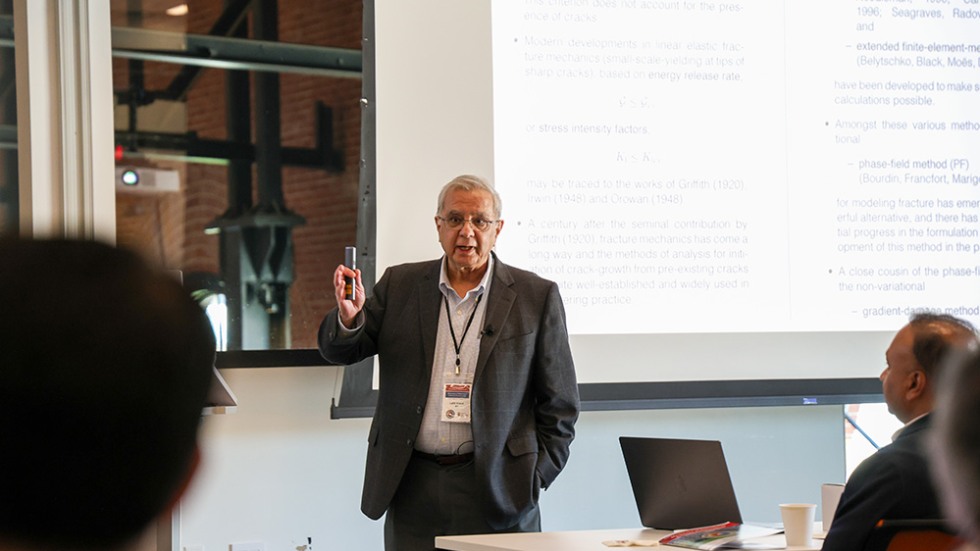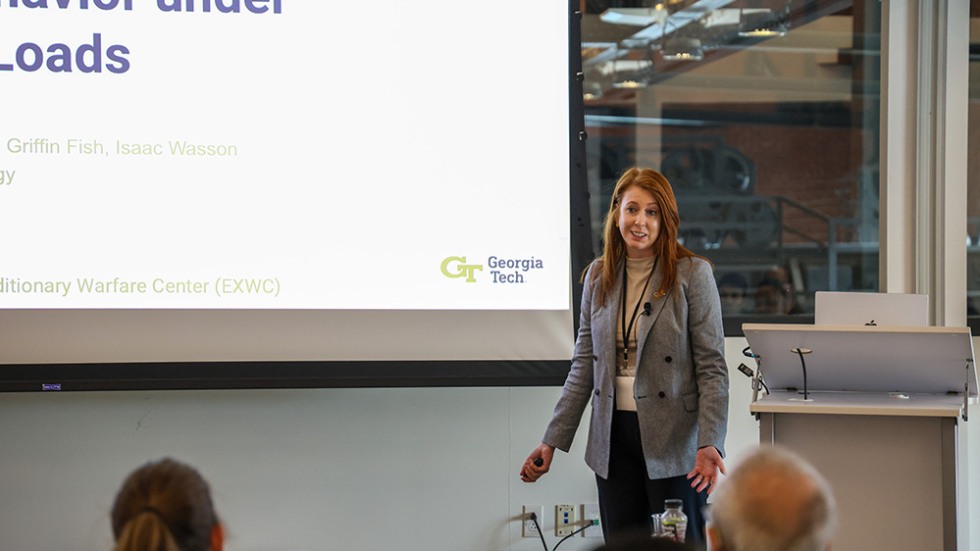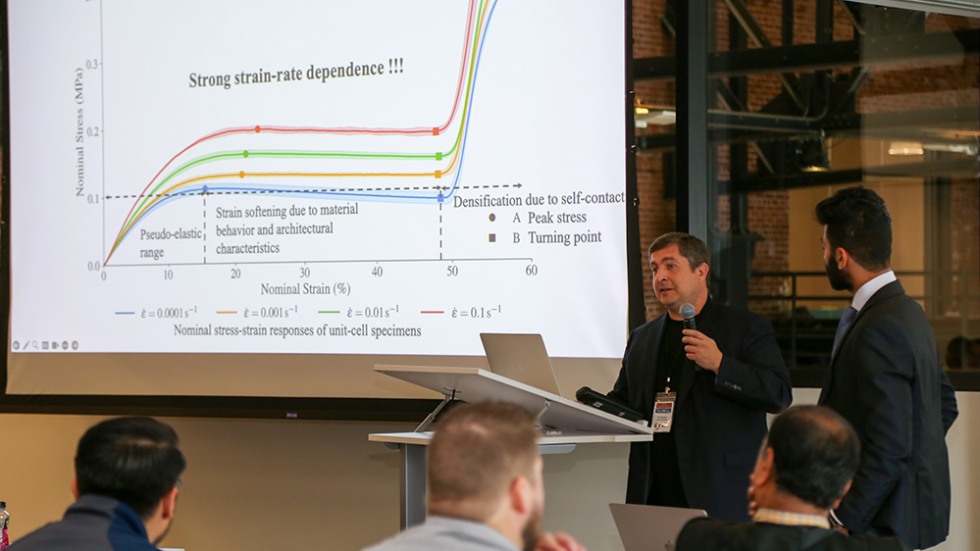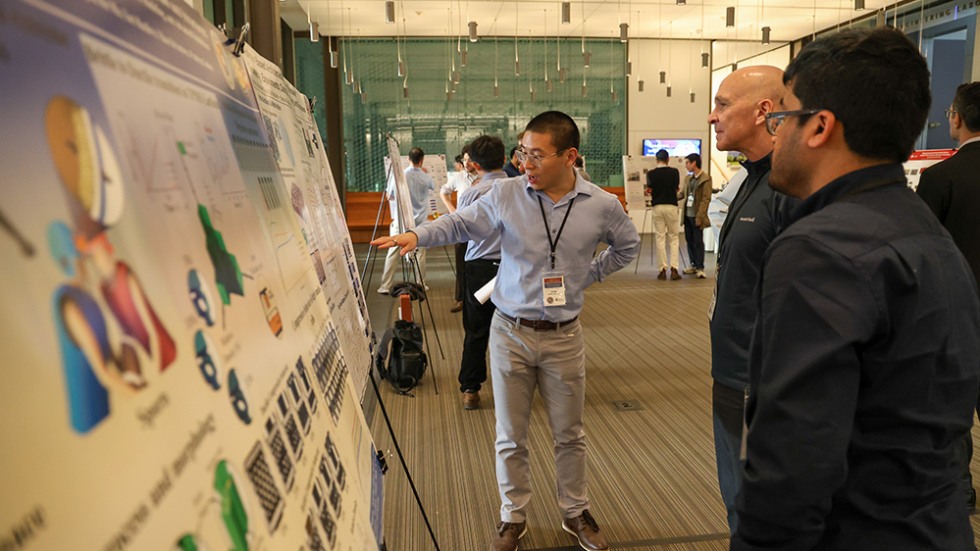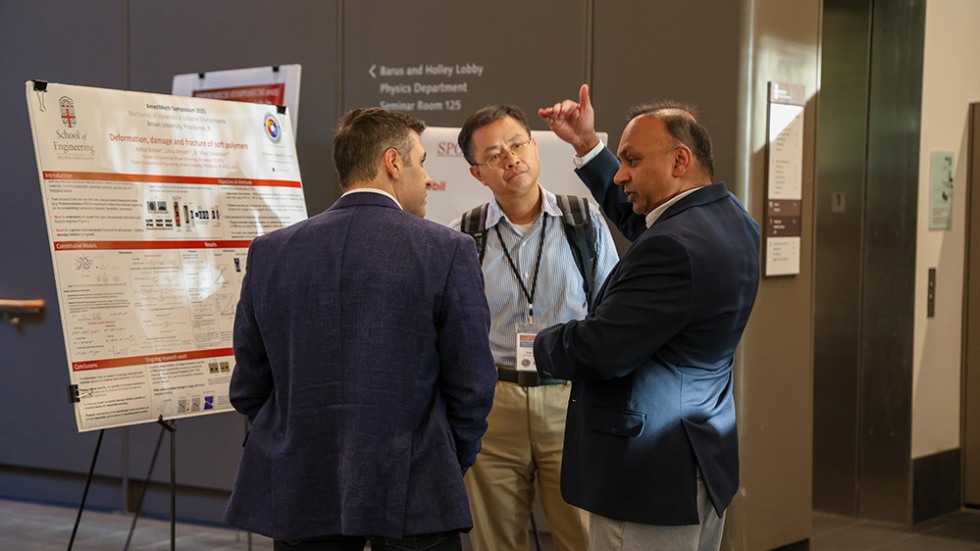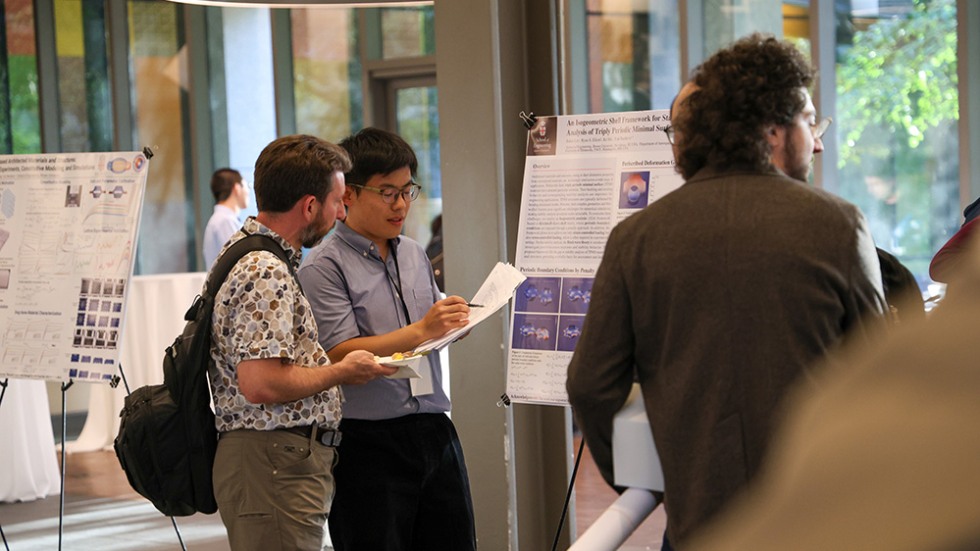The U.S. National Committee on Theoretical and Applied Mechanics (USNC/TAM)’s AmeriMech Symposium was held at Brown University, hosted by School of Engineering faculty members Yuri Bazilevs and Vikas Srivastava, along with the University of New Hampshire’s Mrityunjay Kothari. Amerimech symposia are intended to promote interactions among researchers in an area of contemporary interest in the mechanics of fluids and solids, addressing topics of a specialized nature, and allowing for in-depth discussion and encouraging collaboration between participants. Such symposia are known to help assess the state-of-the-art and chart new directions for the future.
Brown’s renowned solid mechanics group (a recent ranking placed numerous Brown engineering faculty members among the top two percent of scientists in the world, with several specifically noted for their work in applied mechanics and materials science) and program of research and instruction that integrates continuum mechanics, materials science, and structural advances in the mechanics of materials made it a natural place to convene top scholars to further understand the response, damage, and failure mechanics of materials under extreme environments.
“This gathering is timely due to the confluence of two key factors,” said Bazilevs. “There have been tremendous advances in experimental, computational, and theoretical solid mechanics to tackle challenging problems like fracture, damage, and multiphysics interactions recently, providing a foundation for pushing the boundaries of materials applications, and also an increasing focus and need of applications of materials in extreme conditions, such as for space exploration, advanced defense and protection capabilities, energy and climate solutions, and implantable biomedical devices, just to name a few.”
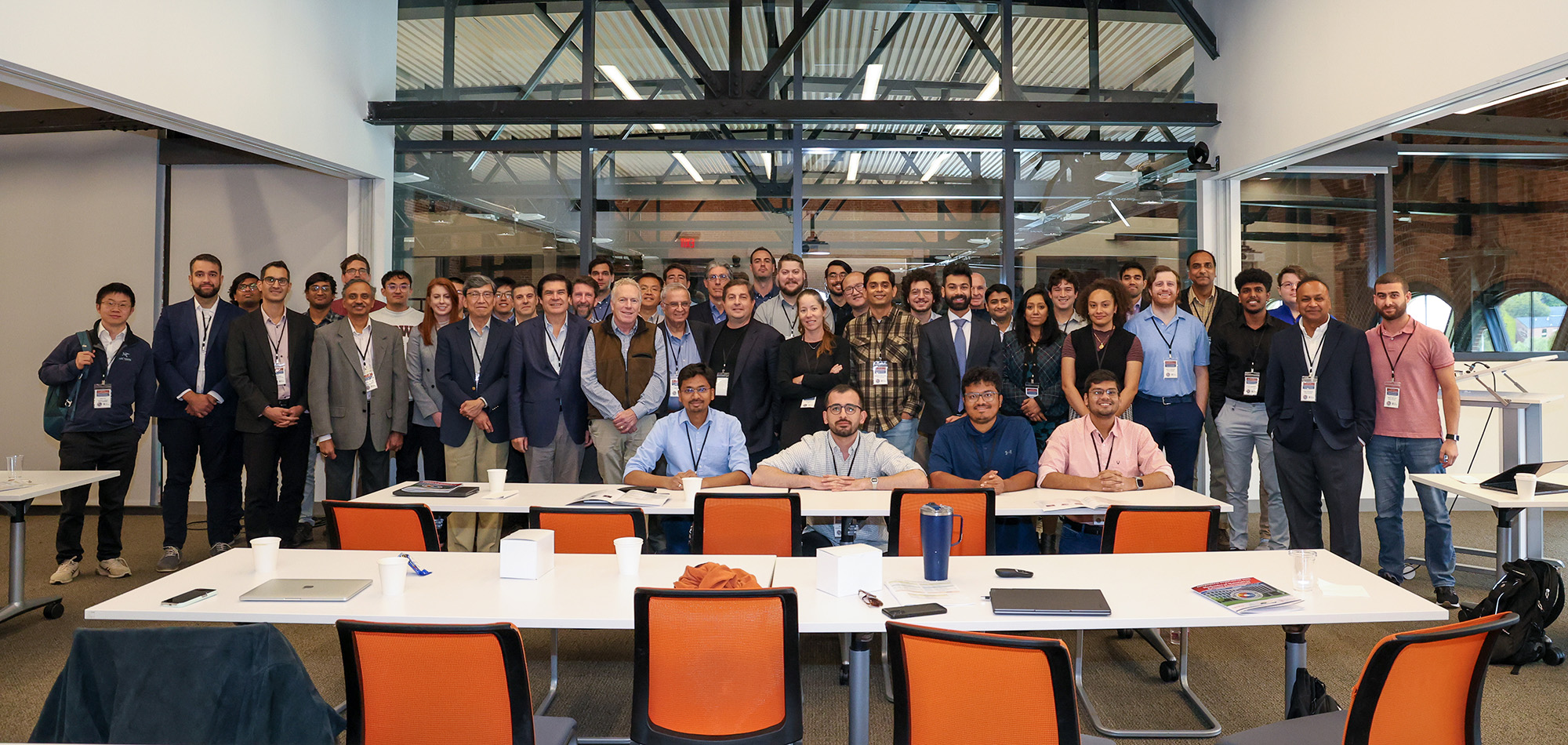
Aside from current faculty, several Brown mechanics alumni were among the invited speakers including National Academy of Engineering members Horatio Espinoza Sc.M.’89, Sc.M’90, Ph.D.’92, P’02, Ravi Ravichandran Sc.M. ’83, Ph.D. ’87, and Lallit Anand Sc.M. ’72 Ph.D. ’75.
Former Brown engineering postdoctoral researchers Christos Athanasiou, George Moutsanidis and Kothari Ph.D. ’19 were also among the speakers.
Examples of extreme environments include high strain-rate loading from impacts and shocks, extreme temperatures, corrosive environments, and complex fluid-structure interactions. While rapid and significant advances in manufacturing and materials science are continuously creating modern materials capable of operating in extreme conditions, the accompanying characterization and modeling of these materials to test and predict their response in extreme conditions remains a challenging open problem in mechanics.
“This symposium presented a unique opportunity to gather both experimentally- and modeling/computation-focused researchers in the same room for three days of focused discussions,” said Srivastava. “Both groups learned from each other about what’s possible to measure in the lab and to predict numerically. We expect such meetings will spark new collaborative efforts, with Brown University researchers playing a central role.”
